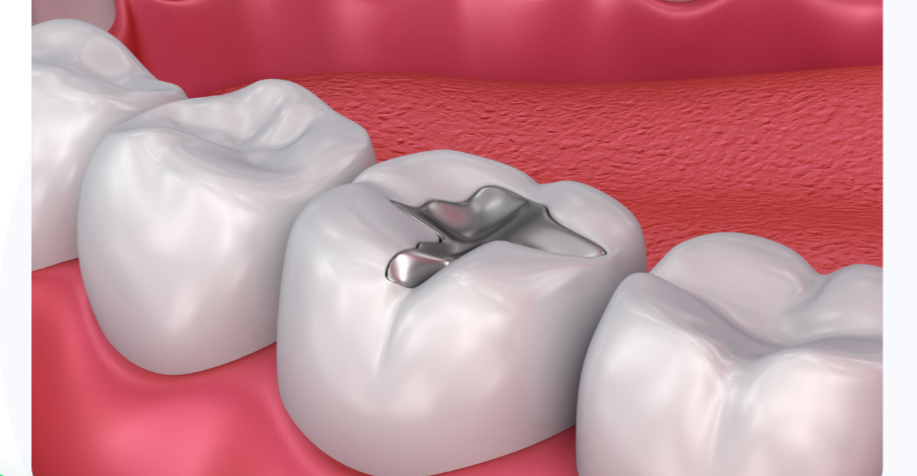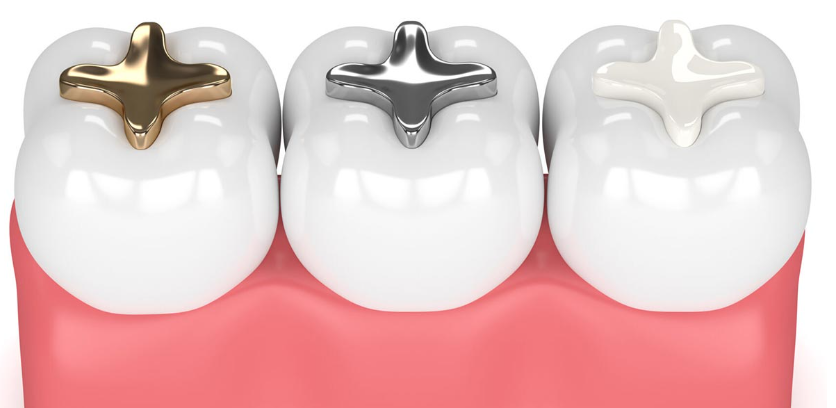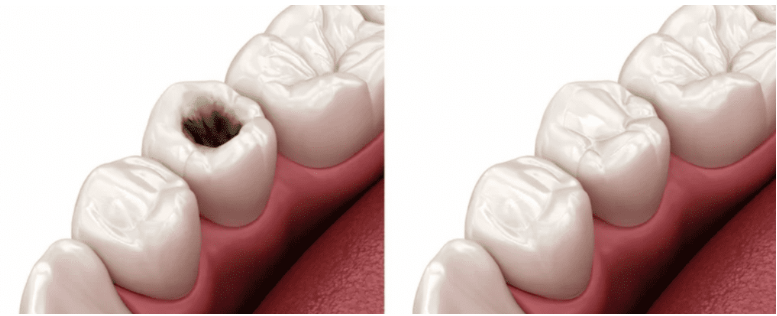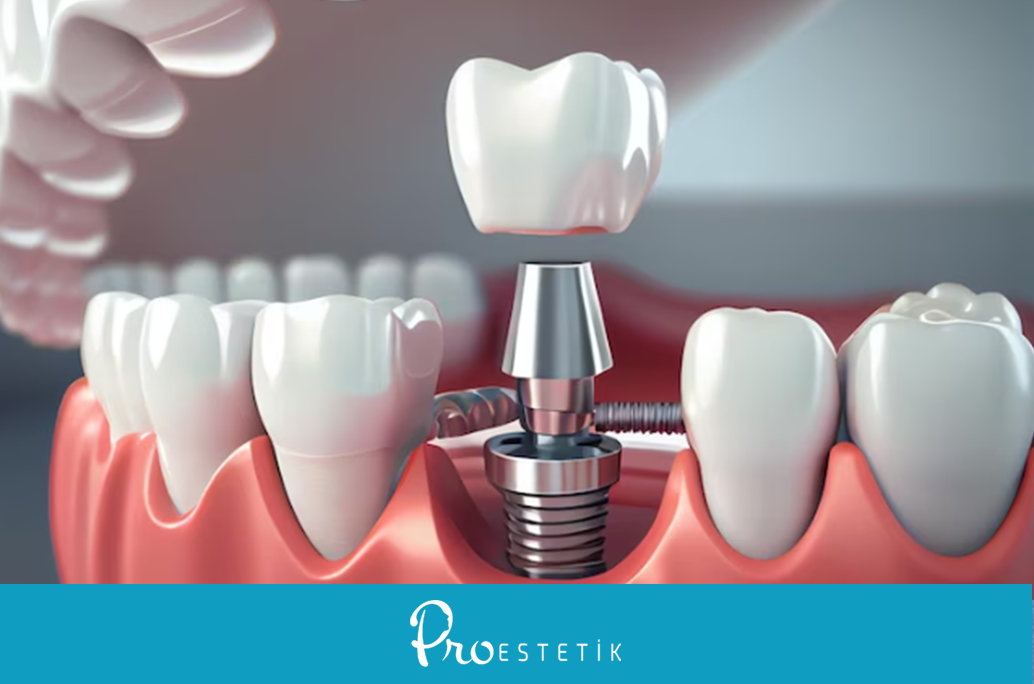Why does a dental filling fall out, how is it done, and what should be done after the filling? Let's explore this together in our writing.
A filling is a common treatment for tooth issues like decay or cracks. If you're curious whether a dental filling hurts, the procedure is typically carried out under anesthesia, so you won't feel any pain. However, it's normal to experience some discomfort after the anesthetic wears off.
To ensure the longevity of your filling, it's crucial to avoid hard, extremely hot, and cold foods after the procedure. Neglecting these important points might result in the filling falling out or cracking. So, what should you pay attention to for your filling to stay strong and last for years, and why does a dental filling fall out? Let's explore it together.
Reasons Why Dental Fillings Fall Out: 10 Causes

A filling is a reliable application commonly used for tooth cavities. Normally, after this procedure, a person can use their filled tooth for many years. However, in some cases, the filling may come loose or break. Let's list the reasons why dental fillings fall out in 10 items.
- Fillings under prolonged pressure can fall out over time due to damage.
- Vigorous tooth brushing and using hard-bristled toothbrushes can damage the filling.
- For individuals who grind their teeth, the pressure can cause the filling to fall out.
- Poor dental hygiene can lead to plaque formation, damaging the filling.
- Eating immediately after the filling procedure or consuming very hot or cold foods can shorten the lifespan of the filling.
- Eating hard foods like nuts in subsequent periods can dislodge the filling.
- Decay in the tooth can weaken the filling.
- Any cracking or breaking of the tooth can dislodge the filling.
- Improper use of dental floss can harm the filling.
- Foods that stick to the teeth like chewing gum can dislodge the filling.
For those wondering why dental fillings fall out, we can list the reasons in this way. Fillings can fall out due to a person's negligence and incorrect usage, but they can also come loose over time as they complete their lifespan. In such a situation, it is advisable to quickly consult with your dentist.
Does Dental Filling Hurt?
After answering the question of why dental fillings fall out, let's explore another issue: why dental fillings hurt. Initially, there might be some pain within the first day due to the local anesthetic wearing off. However, if you're still experiencing pain after a while, it indicates a problem.
During the procedure, the patient won't feel any pain due to the anesthetic. Later, aching might develop, and if it continues, there might be an issue.
Pain in a filled tooth in the first few days after the filling is normal. Both the tooth and the gum can be sore. But prolonged aching of the filling indicates some problems. Let's examine these problems by listing:
- Faulty filling can cause discomfort, particularly sensitivity to hot and cold.
- The development of new decay or cracks on the filled tooth can cause pain.
- In some cases, a completely natural filling can reach its lifespan, resulting in pain.
- Any inflammation in the tooth root can cause pain and sensitivity.
- Poor cleaning of a decayed tooth before the filling might cause pain.
As an answer to the question of why dental fillings hurt, we can list these items. These are written based on general data and are to provide an estimate. To receive a clear diagnosis of the cause of your pain and to seek immediate treatment, please contact us. Through our expert team, you can find a solution to your pain with the advantage of a free initial consultation.
How Is Dental Filling Done?

After addressing why dental fillings fall out and cause pain, let's move to another question. How is a dental filling done?
During a dental filling, the existing decay in the tooth is first removed. If these decay areas are not meticulously cleaned, they might cause pain in the tooth. The remaining cavities are then filled with filling material. This helps prevent any new decay. Different fillings may be used in different treatments.
After learning how the filling is done, let's move on to another significant question. Why is a dental filling done? Gold, porcelain, and composite can be used in dental fillings. Different materials can be preferred due to cost, the size of the filling area, and the patient's allergic conditions.
Gold fillings are generally the most durable. Silver fillings are suitable for unseen back teeth due to their color. Composite fillings are made in the same color as your tooth and are often used for aesthetic purposes in front teeth. Let's explore the lifespan of fillings made with these materials using a table:
| Filling Material | Average Lifespan |
| Amalgam | 10 |
| Composite | 7 |
| Ceramic | 10 |
| Gold | 15 |
The above-mentioned filling lifespan figures are average and can vary based on an individual's oral structure and the care they take.
Why Does Dental Filling Break?

The question of why dental fillings fall out concerns many people suffering from this issue. Another issue is the breakage of dental fillings. So why do dental fillings break?
Post-procedure fillings can break and lead to pieces of the filling material coming out in your mouth. In fact, the reasons for this situation are similar to those for dental fillings falling out. Generally, poor oral hygiene and eating hard foods can lead to the filling's breakage. Moreover, fillings can lose their durability over time and start to break.
Following the dentist's post-procedure recommendations, avoiding extreme hot or cold foods can prevent problems like fillings falling out or breaking. However, regular check-ups with your doctor are still recommended. This way, your dentist can inform you clearly about the condition of your fillings.
5 Things You Should Pay Attention to After Dental Filling

Firstly, let's address the things to be careful about directly after the dental filling procedure. Initially, it's advisable to be cautious because the anesthesia doesn't wear off immediately. Since you don't feel pain, you might inadvertently apply more pressure to your cheeks or tongue than you realize.
Usually, the anesthesia wears off within 3 to 5 hours after the procedure. However, this time might vary from person to person. During this time, it's a good idea to check for numbness in your cheeks or lips by lightly touching them with your fingers.
After learning why dental fillings fall out, the following items will also provide guidance on how to ensure the longevity of your filling:
- It's recommended not to eat for 2-3 hours after the filling procedure.
- Avoiding very hard foods for 24 hours after the filling procedure is advised.
- Being extra careful with dental hygiene after the filling is beneficial for your dental health.
- Limiting the consumption of extremely hot or cold foods for a while is also recommended.
- If you feel any bulging in the filling after numbness has subsided, it's advised to consult your dentist quickly.
If you need any further clarification or additional information, feel free to ask.

 English
English Turkish
Turkish Deutsch
Deutsch العربية
العربية![[:en]Why Does Dental Filling Fall Out? The Top 10 Mistakes After Filling...[:tr]Diş Dolgusu Neden Düşer? Dolgu Sonrası En Sık Yapılan 10 Hata...[:de]Warum fällt eine Zahnfüllung aus? Die Top 10 Fehler nach dem Füllen...[:ar]لماذا تتساقط حشوة الأسنان؟ أكبر 10 أخطاء بعد الحشو...[:] diş dolgusu neden düşer](https://proestetik.com.tr/wp-content/uploads/2023/10/dis-dolgusu-neden-duser.png)










